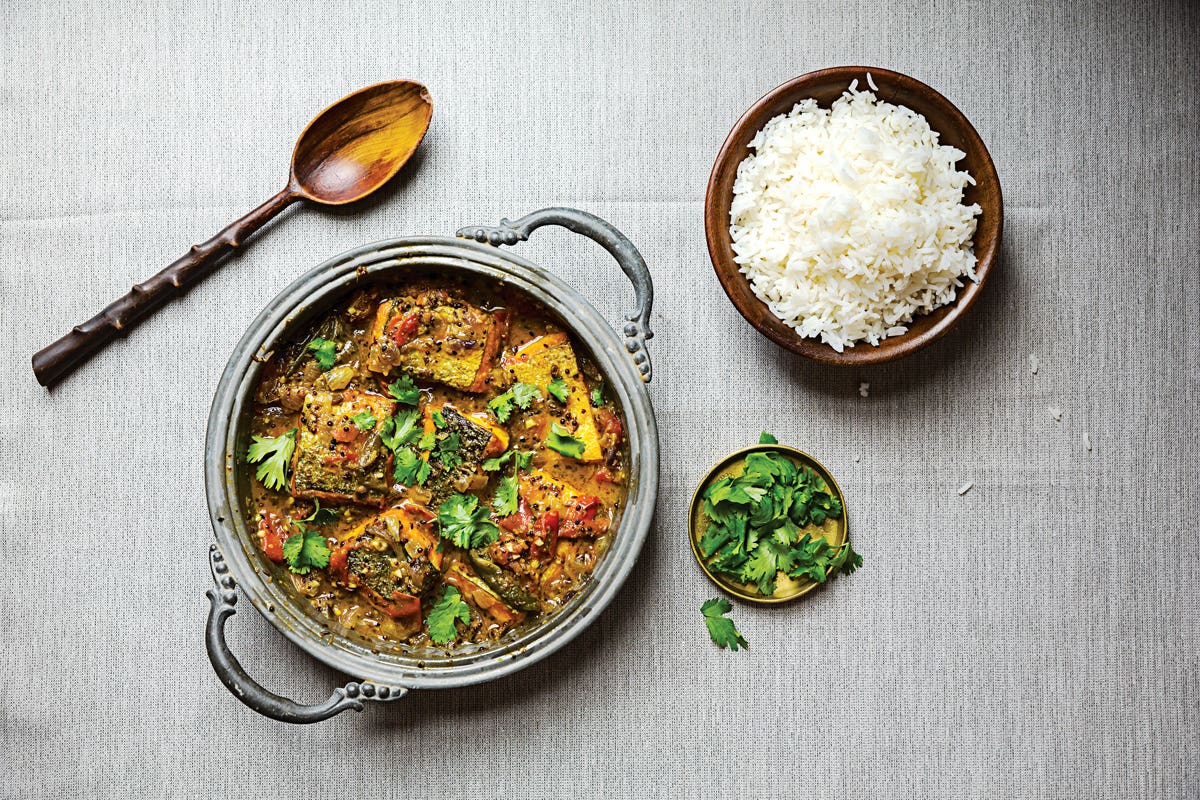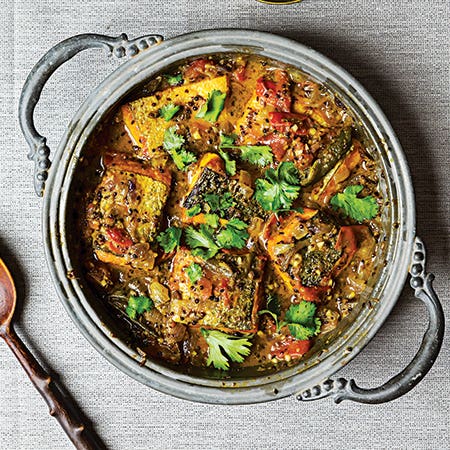

“I don't like fish so much,” my grandmother used to murmur at lunch, as her slender turmeric-stained fingers reached into a small brass bowl for a piece of white-fleshed fish in tangy broth. Her insistence on eating a food she disliked every day of her 93 years on earth was a testament to her sense of cultural identity: She was Bengali, so she ate fish. It couldn’t be any other way.
You see, no Bengali meal is complete without rohu or some other long silver river fish from the region, which is plentiful in bodies of water. To make the simple stew known as maacher jhol, the fish is often simmered in a tomato-based curry scented with the region's distinctive mix of five spices: toasted fenugreek, nigella, cumin, black mustard, and fennel seeds.
Eating this dish requires some dedication. Fork tines are too wide to elegantly pull out the spiny fish's tiny bones, so you must pick them out with your hands. And opening and slurping one's way through the most prized portion—the muro, or fish head—is an intricate and absorbing process. It’s worth the effort, however. The oils, meats, juices, and jellies offer an adventure in texture and flavor, not to mention a potently healthy source of vitamins and omega-3 fatty acids. Indeed, my grandmother credited fish for keeping her hair black well into her 80s. Still, we grandchildren were always mystified by her determination to eat something she claimed not to like. "Why do you eat it?" we would squeal, only to be shushed. "Don't talk," she'd chide. "Concentrate on looking for bones."
Keep Reading
Continue to Next Story










